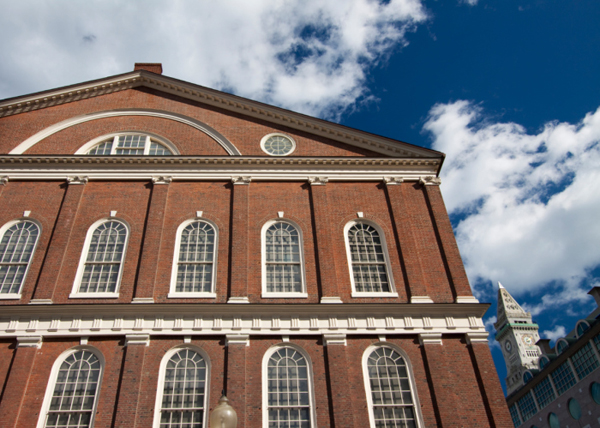Rethinking Faneuil Hall
 (Photo via iStockphoto.)
(Photo via iStockphoto.)
Love it or hate it, Faneuil Hall has a place in American history, and just not because of its open-market pandering of revolutionary era trinkets to visitors. No, it’s actually the pandering itself that’s notable. That’s because in the late 1970s, Faneuil Hall was developed with tourists in mind as the country’s first “festival marketplace.” And upon seeing its success, other cities scrambled to develop their own tourist wonderlands, as the Wall Street Journal reports:
Many of the centers soon became among the most visited destinations in the cities. Baltimore created a maritime-themed Harborplace retail center. Cities from Miami to New Orleans to Norfolk, Va., each built their own versions.
But in the past 15 years of urban revitalization, these fanny-pack havens now seem dated and contrived — never mind the fact that locals wouldn’t be caught dead hanging out there. So several major cities — Boston included — have started to look for ways of rethinking these sites to better accommodate visitors and locals. Chicago is putting up big public dollars to convert its Navy Pier from an amusement park to an actual park. With grass! And pools! (You can see some design ideas here.) And New York is looking to redevelop the South Street Seaport, which is now a sea of tchotchkes, into a floating glass upscale mall (far less inspiring, sure, but they do have the gorgeous High Line they can point to when it comes to creative use of public land). So where is Boston headed?
It’s looking like we’re going shopping. Faneuil Hall’s new operators, the New York-based Ashkenazy Acquisition Corp., who took over last fall, recently announced that they intend to unveil new plans for the site this spring. Already, they’ve brought in local architecture firm Elkus Manfredi to help redesign the retail space. And judging from the firm’s past projects–they designed the undulating facade at the Neiman Marcus store in Natick and the high-end “Shops at Columbus Circle” in New York (don’t you dare call it a mall) — it’s easy to envision a swath of luxury stores eventually encroaching upon Yankee Candle and The Gap. And that’s in keeping with what Ashkenazy’s told the press: according to the Journal, the company “isn’t planning to depart from the center’s historic theme. But it wants to revamp the retail operation to better attract office workers in the neighboring downtown.”
Quality retail options will certainly bring in more locals, so that’s a good start. But I hope that isn’t it. Right now, there have been few other details released about the site, but we know that Ashkenazy has been working with the city and current tenants to solicit ideas for improvements. So I solicited a few of my own from around the office. From the minds of my esteemed colleagues:
Fewer chains and more independent businesses. (Ed.: Many of these have been pushed out in the past due to high rents).
A handful of locally-owned housewares shops, like Hudson, Lekker, Abodeon, or KitchenWares.
Sidewalk cafes galore! With awnings and heaters so we can even use them come fall and spring.
A great wine bar, a great brewpub, a serious oyster bar, and a Flour Bakery outpost.
Bars that don’t cater to beer-soaked meatheads.
A douchebag museum (to appease the meathead contingent).
A mini-golf course or a Ferris wheel.
An open-air farmer’s market that puts Haymarket to shame. (Ed.: That may already be on its way if the Boston Public Market continues to roll out as planned.)
Green space in general — create a more organic connection between the marketplace and the Greenway nearby.
More than anything, the consensus among the office was that that whatever shape Faneuil Hall takes in its latest iteration, it needs to incorporate public input and ideas and consider how locals — not just luxury shoppers — will use it. If we set the standard for public use projects in the 70s, there’s no reason we can’t do so again now.
What else can be done to improve Faneuil Hall? Tweet me @janellenanos, and I’ll share them with our readers.


